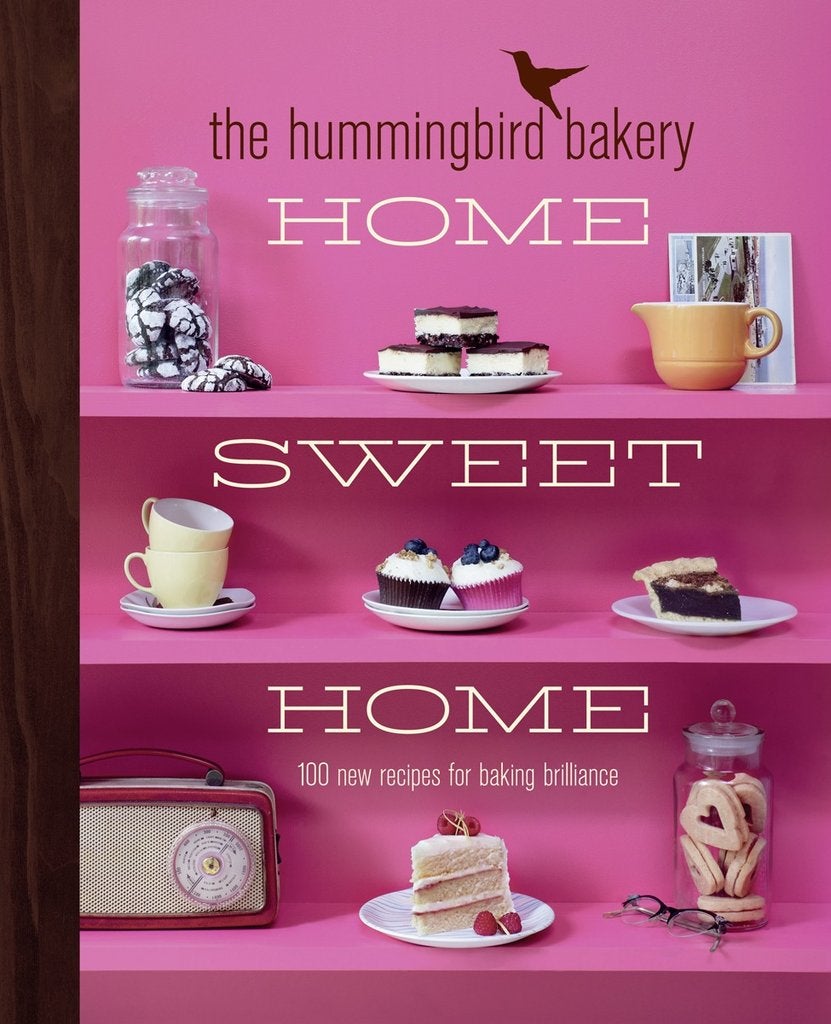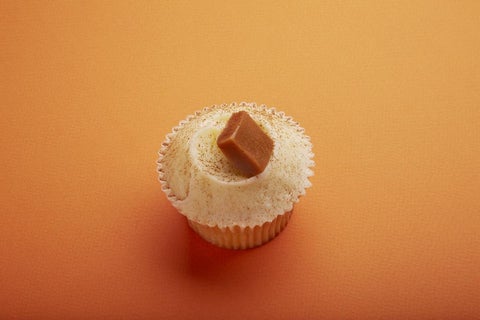
Unfortunately we can’t answer individual queries via the blog. Baking has many variables and it takes practice.
Even at our bakeries, it doesn’t always go perfectly, so don’t feel disheartened if it doesn’t work first time.
Making the perfect cake or cupcake is both a science and a skill – it’s not easy being this tasty.
Strawberry Milkshake Cupcakes
Vanilla/Chocolate Fudge

Strawberry Milkshake Cupcakes
Where can I buy edible straws to decorate my cupcakes?
Edible straws can be purchased from specialist sweet shops and online – any thin sugar candy stick can be used. Candy sticks are sometimes called ‘candy cigarettes’ or ‘old fashioned candy sticks’ and are made from sugar.
At The Hummingbird Bakery, we make our edible straws by hand. They are simple to make and you can customise the colours to make striped straws. To learn how to make edible straws, visit our blog.

Vanilla/Chocolate Fudge
What are the different stages of sugar?
Thread (e.g. syrup) – 110 to 112 °C (230 to 234 °F)
Soft ball (e.g. fudge) – 112 to 116 °C (234 to 241 °F)
Firm ball (e.g. soft caramel candy) – 118 to 120 °C (244 to 248 °F)
Hard ball (e.g. nougat) – 121 to 130 °C (250 to 266 °F)
Soft crack (e.g. salt water taffy) – 132 to 143 °C (270 to 289 °F)
Hard crack (e.g. toffee) – 146 to 154 °C (295 to 309 °F)
Clear liquid 160 °C (320 °F)
Brown liquid (e.g. liquid caramel) – 170 °C (338 °F)
Burnt sugar 177 °C (351 °F)
What is soft ball stage?
Soft ball stage is so-called because it is the temperature at which sugar will form a soft ball when dropped into cold water. Once removed from the water, the sugar won’t hold itself in a ball and it will slowly fall flat. This is anywhere from 112 to 116 °C (234 to 241 °F). Soft ball sugar is used to make softer candies like fudge and fondant.
I’ve burnt the sugar in my fudge. Can I save it?
Burnt sugar will retain its burnt taste, so unless it leaves you with a pleasant caramelised taste (this is entirely at the discretion of your taste buds!), it’s beyond saving. A sugar thermometer will help you to prevent burning as you can remove the sugar from the heat as it reaches just the right temperature. For the best tasting fudge, we recommend ditching the burnt batch and giving it another go.
The fudge is too hard. What went wrong?
If your fudge it too hard to the bite, it has been overcooked. An accurate sugar thermometer is worth investing in so that you can time the sugar just right. It should not exceed a temperature much over 115 C (239 F), which is the level required to take the sugar to soft ball stage.
The fudge is too soft. What has happened?
If you find that your fudge is too soft, it is possible that your sugar mixture didn’t reach a high enough temperature. Fudge needs to reach the soft ball stage which is 115 C (239 F). Use a sugar thermometer to ensure the sugar mixture reaches this temperature.
You can try and put the fudge back in the saucepan with a little extra water (up to 350ml) and reheat it with the sugar thermometer in the pan to measure the temperature. Start on a low heat and increase to a medium heat, allowing the sugar mixture to boil and reach soft ball stage. But it is often easier to start the fudge again afresh.
The sugar has congealed to a hard mess at the bottom of the pan. What has happened?
The heat is too high and the mixture has got hot too quickly and this has caused the sugar on the bottom of the pan to become hotter and reach a much lower concentration of water and much higher concentration of sugar than the mixture at the top of the pan – which is cooler. The sugar on the bottom of the pan will be inedible and much too grainy in texture – good fudge is all about smooth texture. When making fudge, be sure to heat the sugar gradually and carefully. Keep a close eye on it and if you see your mixture is heating too fast, turn it down. It will reach the correct stage gradually; it just may take a little longer. Also, make sure you’re testing the temperature of the mixture at the bottom of your saucepan too, not just the top.
How do I prevent the fudge from becoming grainy?
Fudge becomes grainy due to the formation of sugar crystals. Make sure you don’t stir the mixture as it comes up to temperature and cools back down after the butter is added, this makes it very easy for sugar crystals to form and give the fudge an undesirable graininess.
Also, sugar work requires the baker to have a sugar thermometer on hand as there can be very little difference between the stages at which sugar heats. For example, there is not much separating soft ball 112 to 116 °C (234 to 241 °F) and the next stage, which is firm ball 118 to 120 °C (244 to 248 °F) – this is the sort used to make chewy candies and caramels and is too hard for fudge.
My fudge hasn’t turned out right. What can I do?
Fudge, or any sugar work for that matter, requires practise. It is a technical process getting the sugar to the desired temperature and things often go wrong even for experienced bakers, but don’t let that put you off attempting it. It’s incredibly satisfying, and not to mention delicious, when it works! See our FAQs above for more specific guidance on making fudge.

